Since I’ve now got a 4K TV, I’ve decided to test 4K support for six different platforms based on Rockchip, Allwinner, Amlogic, Realtek, HiSilicon, and Mstar processors. For all these platforms I’ll report HDMI 4K output options, user interface resolution, and take close up pictures of the screen while displaying a 4K 1×1 grid picture and video with the image players, and video players such as MX Player or XBMC depending which are available in the firmware.
Test Setup and Procedure
I’m using LG 42UB820T 42″ UltraHD television with an HDMI cable connected to HDMI 1 port of the TV. Please note that my TV only support 8-bit color depth / YCbCr 4:2:0 which may cause compatibility issues with some boxes, at least the ones based on RK3288 processor, for 2160p 50Hz or 60Hz mode. I’ll take close-up pictures of the screen with a Canon PowerShot A2300HD camera by holding it with my hand (i.e. no tripod). This is important, because if the image feels a little bit blurry, this is most probably the reason. The important part are the black and white dot as I’ll explain below.
Six devices advertized with 4K support will be tested with the version of the firmware in the box/board:
- Zidoo X9 based on Mstar MSO9810 processor
- Open Hour Chameleon based on Rockchip RK3288 processor
- BFS 4KH based on HiSilicon Hi3798M processor
- A80 OptimusBoard powered by Allwinner A80 processor
- Eny M8S powered by Amlogic S812 processor
- M-195 powered by Realtek RTD1195 processor
Then I’ll report the following:
- Framebuffer / User Interface resolution with data from CPU-Z, Antutu, or Screenshot size
- Picture display quality by displaying a 3840×2160 test pattern in PNG or (non-progressive) JPG format, using the available image viewer in the firmware, and take a close-up picture.
- Video display quality by playing a 3840×2160 video test pattern in MKV format, using the provided 4K player, MX Player and/or XBMC/Kodi depending on what’s available in the firmware, and take a close-up picture.
This is the reference picture when decoding the JPG image directly with my TV’s internal software.
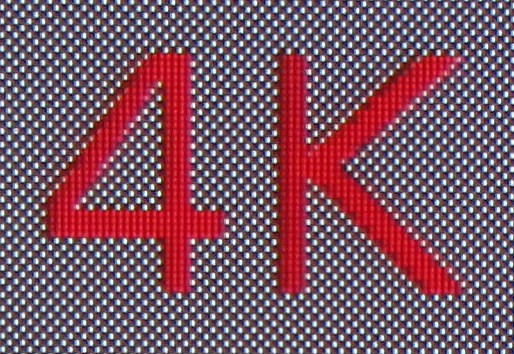 We can clearly see a 1-pixel black and white grid, and if the boxes properly output 4K, the picture should look similar to the one above. If not there may be only white or black around “4K”, or some non-uniform pattern of black and white dots.
We can clearly see a 1-pixel black and white grid, and if the boxes properly output 4K, the picture should look similar to the one above. If not there may be only white or black around “4K”, or some non-uniform pattern of black and white dots.
For each box, I’ll make sure scaling is set to 100% to avoid distortion of the image, and my TV aspect ratio is set to “Just Scan” to make sure all pixels are visible on the screen, and the system does not overscan. The status bar must hidden during video playback / picture display or this will change the picture aspect ratio, and affect the test. There’s a red border around the picture, it must be seen, or that seem the player may have zoomed in the video or picture.
If you use MX Player make sure it’s using H/W decode, and not S/W decode, as the latter will render to the framebuffer instead of hardware buffer, meaning the framebuffer resolution is used.
You can download 4K test patterns. The MKV video was created from the PNG file with the command line:
|
1 |
avconv -loop 1 -i 4ktest_red.png -c:v libx264 4ktest_red_border_loop.mkv |
I’ll show the picture for all boxes below, but if you just want to read the results scroll down to the summary table. The pictures take with my camera, before I zoom can be found here.
Please note that while we can conclude whether given SoC support 4K, we can’t confirm an particurlar SoC does NOT support 4K properly in case of issues, because it could simply be a firmware bug.
Zidoo X9 – 4K Support
4K Video Output Options – DACOUT_4K2K_30 or DACOUT_4K2K_25
Framebuffer resolution – 1920×1080
Picture displayed with Image Player app.
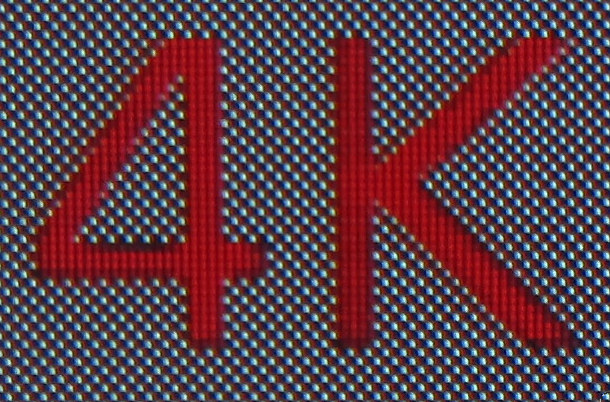
Video played in MX Player (H/W decode)
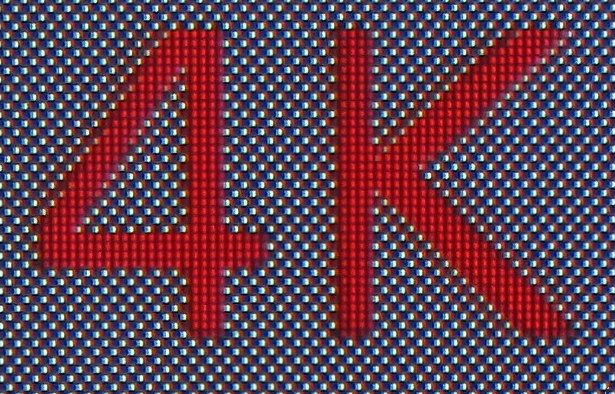
Video played in Kodi
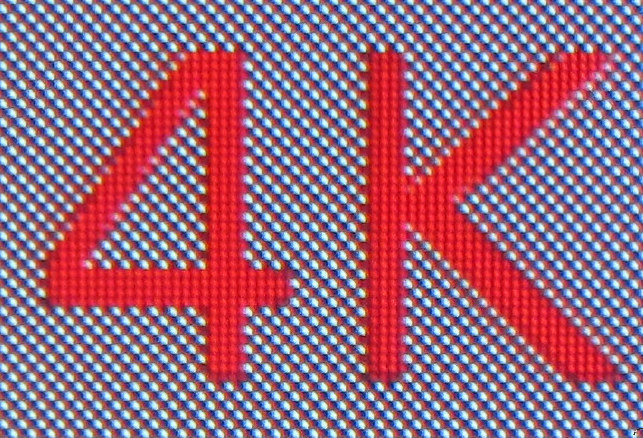 All 3 pictures have clear black and white dots. 100% mark for Zidoo Z9 for decoding 4K pictures and playing 4K videos.
All 3 pictures have clear black and white dots. 100% mark for Zidoo Z9 for decoding 4K pictures and playing 4K videos.
Open Hour Chameleon – 4K Support
4K Video Output Options – 4K2K – 30Hz, 4K2K – 25Hz, 4K2K – 24Hz
Framebuffer resolution – 1920×1080
Picture displayed with Gallery app. (Note: OHC has a Photo app, but I could not make it to display the picture in full screen mode, so I reverted to the Gallery app)
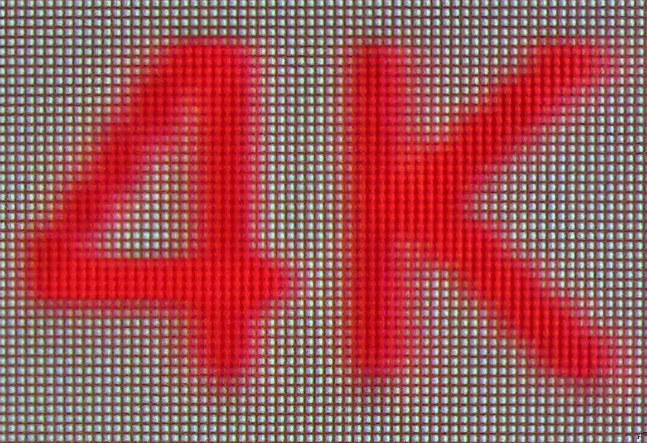
Video played in XBMC
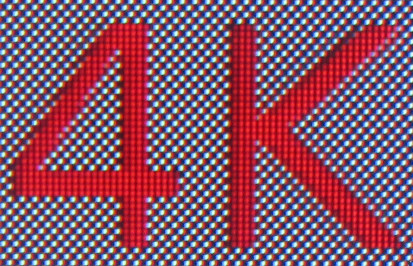 So 4K does work OK in this Rockchip RK3288 TV box, contrary to what I wrote a while ago, and my mistake was to use S/W decode in MX Player which renders to the framebuffer.
So 4K does work OK in this Rockchip RK3288 TV box, contrary to what I wrote a while ago, and my mistake was to use S/W decode in MX Player which renders to the framebuffer.
BFS 4KH – 4K Support
4K Video Output Options – 2160p24, and 2160p30
Framebuffer resolution – 1920×1080 or 1280×720 (Selectable in options)
Update: Since the company provided a new firmware (http://pan.baidu.com/s/1FBRfo password: nhit), I’ve tested it again. I’ve left the older test results in the “Old firmware” section, and the improved results in “New firmware”.
The company asked me to leave the following warning when I share the firmware:
This firmware DO NOT Guarantee stable if the box is not 4KH from our company.WE DO NOT Guarantee stable if the box is not our 4KH.
Old firmware
Picture displayed with Gallery app.
Video played in XBMC for HiSilicon
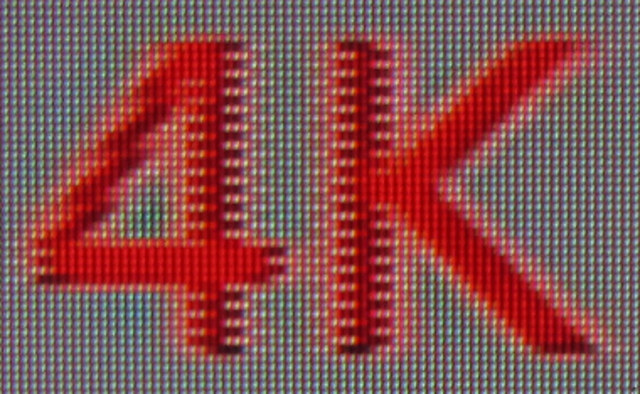 BFS 4KH is a pretty good box for the price, but based on my testing, although it can output @ 2160p, rendering is done at 1080p for both pictures and videos. The red “4K” looks particularly ugly.
BFS 4KH is a pretty good box for the price, but based on my testing, although it can output @ 2160p, rendering is done at 1080p for both pictures and videos. The red “4K” looks particularly ugly.
New firmware
The image quality of the PNG file is still very bad, so I skipped this test.
Video played in MediaCenter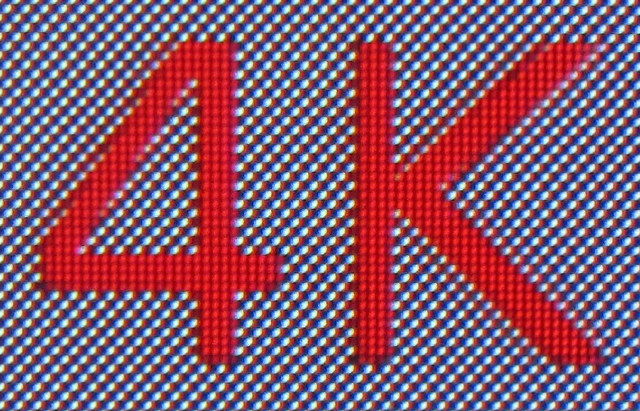 It looks as it should be. All good.
It looks as it should be. All good.
Video played in Kodi 14.0-beta5 (pre-installed)
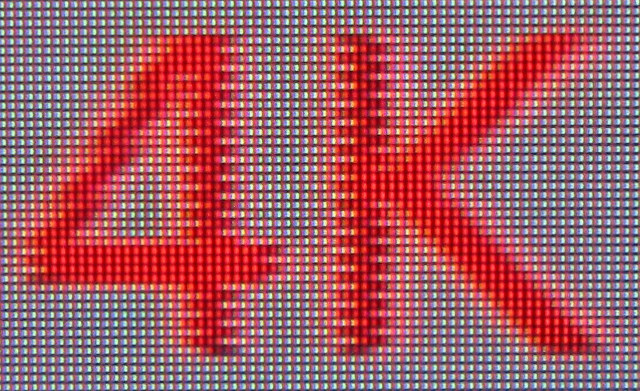 Sadly the new firmware does not fix 4K video quality in Kodi/XBMC.
Sadly the new firmware does not fix 4K video quality in Kodi/XBMC.
A80 Optimusboard – 4K Support
4K Video Output Options – 2160p30
Framebuffer resolution – 1920×1080
Picture displayed with Gallery app.
Video played with 4KVideoPlayer app
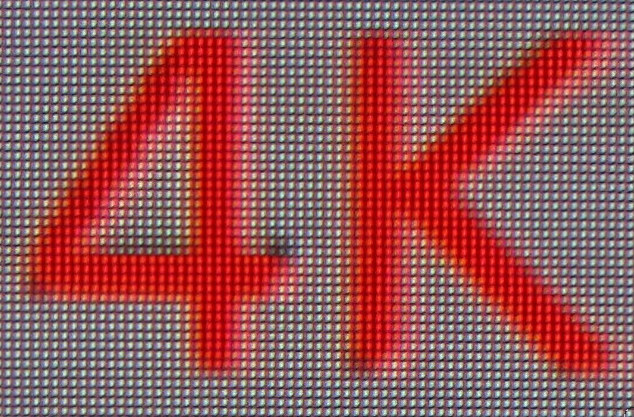 The images look not too bad, but no black and white dots, so the board fails to properly output 4K pictures and videos, even with their 4K player. The firmware dates from September, and testing with a TV box like Tronsmart Draco AW80 might have yielded different results, but I don’t own it anymore.
The images look not too bad, but no black and white dots, so the board fails to properly output 4K pictures and videos, even with their 4K player. The firmware dates from September, and testing with a TV box like Tronsmart Draco AW80 might have yielded different results, but I don’t own it anymore.
Eny M8S – 4K Support
4K Video Output Options – 4K2K-24Hz, 4K2K-25Hz, 4K2K-30Hz or 4K2K-SMPTE. Selecting the latter is the same as 2160p24Hz on my TV
Framebuffer resolution – 1920×1080
Picture displayed with Gallery app.
Video played with 4K Video Player
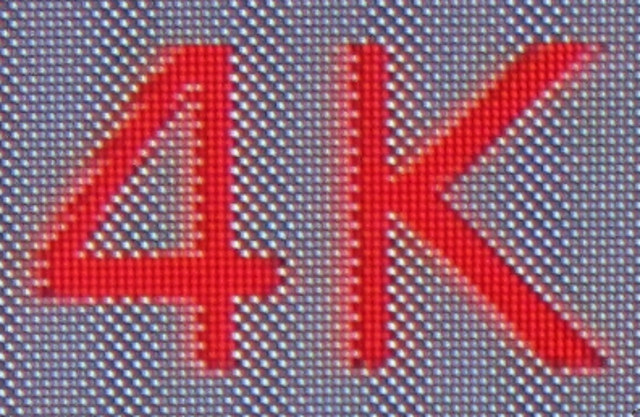
Video played in XBMC.
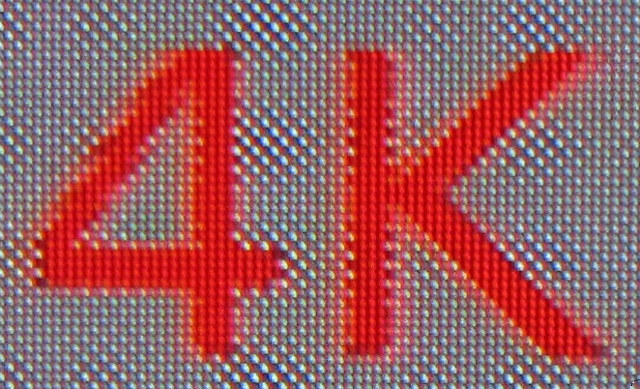 That one is confusing. I can see some black and white dots in the videos, but not everywhere. So it’s like it supports 4K, but some processing affect the video, or the resolution is not exactly 1920×1080. Pictures looks ugly as with all tests with the Gallery app.
That one is confusing. I can see some black and white dots in the videos, but not everywhere. So it’s like it supports 4K, but some processing affect the video, or the resolution is not exactly 1920×1080. Pictures looks ugly as with all tests with the Gallery app.
M-195 – 4K Support
4K Video Output Options – 3840×2160 24Hz, 3840×2160 25Hz, 3840×2160 30Hz, or 4096×2160 24Hz. The latter does not work with my TV (which supports 4096×2160), and all I got is a black screen.
Framebuffer resolution – 1280×720
Picture displayed with Gallery app.
Video played with XBMC
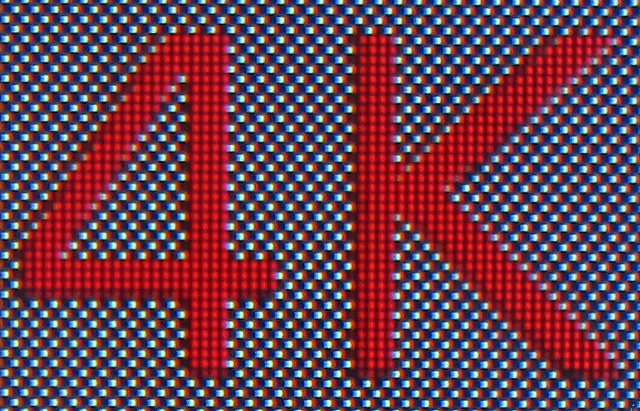 M-195 can play 4K video just fine, but again the gallery app just renders to the framebuffer.
M-195 can play 4K video just fine, but again the gallery app just renders to the framebuffer.
Conclusion
Here’s the summary table for my testing
| Device | Video Output | 3840×2160 Picture | Video |
| Zidoo X9 Mstar MSO9810 |
DACOUT_4K2K_30 DACOUT_4K2K_25 | OK (Image Player) | OK (MX Player and XBMC) |
| Open Hour Chameleon Rockchip RK3288 |
4K2K – 30Hz 4K2K – 25Hz 4K2K – 24Hz |
Blurry, no black and white dots (Gallery) | OK (SPMC) |
| BFS 4KH HiSilicon Hi3798M |
2160p24 2160p25* 2160p30 |
Blurry, no black and white dots (Gallery) | OK (MediaCenter)*
Poor quality image, no black and white dots (XBMC/Kodi) |
| A80 optimusboard Allwinner A80 |
2160p30 | Clear image, but no black and white dots (Gallery) | Clear image, but no black and white dots (4KVideoPlayer) |
| Eny M8S Amlogic S812 |
4K2K-24Hz 4K2K-25Hz 4K2K-30Hz 4K2K-SMPTE | Blurry, no black and white dots (Gallery) | Black and white dots can be seen at some places but not others (4KVideoPlayer and XBMC) |
| M-195 Realtek RTD1195 |
3840×2160 24Hz 3840×2160 25Hz 3840×2160 30Hz 4096×2160 24Hz | Blurry, no black and white dots (Gallery) | OK (XBMC) |
* BFS 4KH updated on February 15, 2015 with new firmware.
So based on the results no platforms support 2160p @ 60 Hz (HDMI 2.0) with my TV. Zidoo X9 is the only one to properly support both picture and video display @ 4K,and two products don’t seem to support 4K properly at all, at least with the firmware I used: A80 OptimusBoard and BFS 4KH. Open Hour Chameleon and M-195 can play 4K just fine, but there’s no app (that I could find) to display pictures at full resolution. Eny M8S (Amlogic S812) appears to support 4K but not all black and white dots are shown, of some data is lost in the way. It’s likely to be a firmware or a setup issue. The Gallery app could not display pictures at high resolution in all hardware platforms, so it’s probably something to avoid with a 4K TV if you want to see your photos with the best quality possible. Devices that can play 4K videos properly should also easily be able to display pictures properly with the right app.
I’ve also noticed some artifacts while pausing the video on (almost?) all devices, but I haven’t been able to reproduce this issue with other videos yet. Here’s what it looks like on Zidoo X9.

Jean-Luc started CNX Software in 2010 as a part-time endeavor, before quitting his job as a software engineering manager, and starting to write daily news, and reviews full time later in 2011.
Support CNX Software! Donate via cryptocurrencies, become a Patron on Patreon, or purchase goods on Amazon or Aliexpress


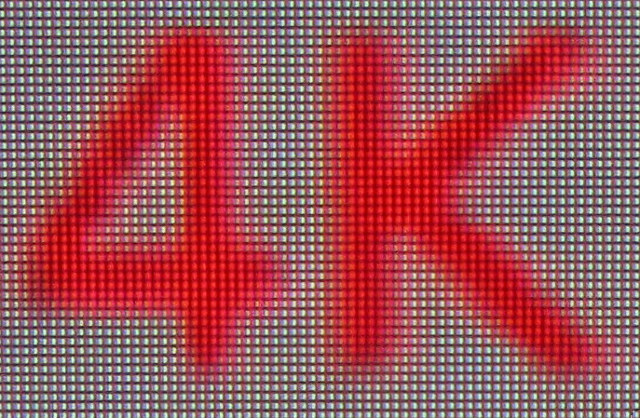
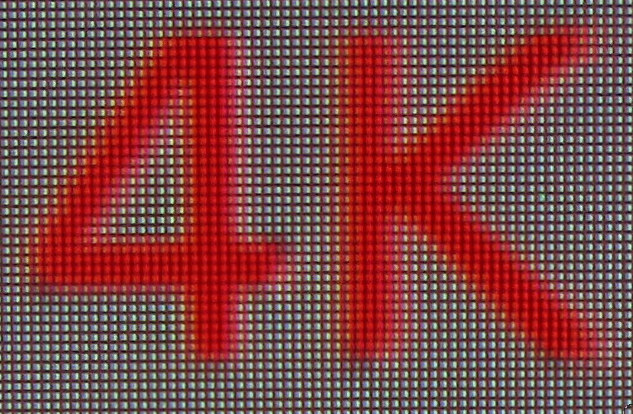
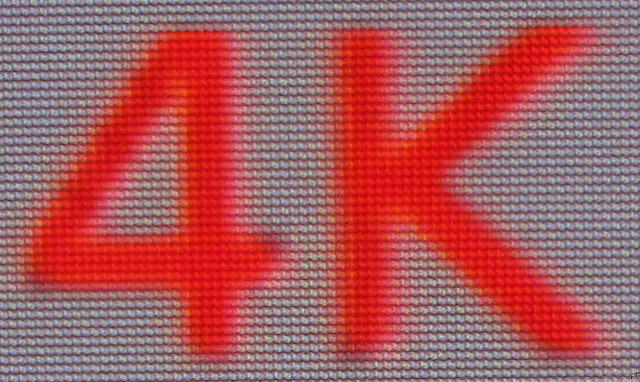
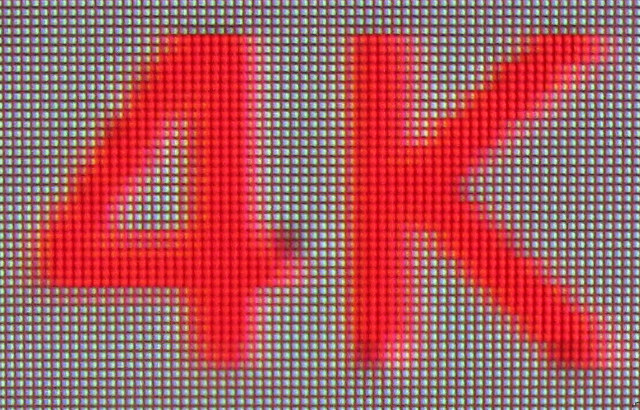



Excellent. Thank you. This is what we all have been waiting for. BUT
Do it all again with a tripod. Come on. Are you trolling your own website? 4k LCD test with a hand held potato cam? Thats insane. Thats like heart surgery with an axe handle. Use green masking tape and physically tape the camera to the lcd. Remote control the camera. Green masking tape comes off LCD perfectly clean. No edges no nothing.
I get bad artifacts on screen also with me rk3288 box running at 4k30hz (my TV does not support 10bit color). I think it is screen tearing and to do with the 30hz refresh rate. If the box is set to 1080 60hz it goes away. I think the box and the TV are somehow misaligned in their refresh rates.
So RK3288 is pretty much equal to RTD1195… Hmm.
And the Mstar being the only one with “perfect” 2160p handling… Another monkeywrench on the plans.
Next up the h.265 decode on 2160p?
In any case, Thank You for these excellent reviews. 🙂
@anon
I’ve already tested 4K H.265 video decode outputted to 1080p. I guess it should be the same at 2160p, or maybe I’m missing something. Anyway I’ll do the review of Zidoo X9 at 2160p 24Hz, so I’ll see if something odd occurs while playing videos. Just waiting for the Google Play Store to work…
About Rockchip RK3288. If the firmware has a “image player” app then it will be able to display images at 3840×2160 resolution. Video output at 2160p @ 60Hz will work with TVs with 10-bit YCbCr 4:4:4. In the LG family at least, TVs supporting this mode all cost above $1,000.
Any chance you can test Intel Z37XX and/or Z35XX?
@Someone from the other side
MeLE PCG03 is on my desk. No 4K support AFAIK.
time to invest in http://www.aliexpress.com/item/1000X-USB-Microscope-Endoscope-Zoom-Magnifier-Camera-PC-W-Stand-8-LED-Light-P4PM/32265815674.html !!
From my knowledge ,MSTAR is the best option for 4k media player with 4k 30@fps support,if u don’t required 60fps support. Another unique features is HDMI-IN feature with PIP and HDMI in 1080p recording ability .
For economical 4k solution ,hisilicion is the best option right now .We’re also the earlier vendor to start this one 🙂
check out my video on Aug,2014. with Charbax :),this is the roadmap i’m sharing with everybody .
https://www.youtube.com/watch?v=eduTV0klA2g
Ryan
Updated post with new firmware for BFS 4KH. 4K videos now play at the right resolution in MediaCenter app, but not in Kodi. Picture display is still problematic.